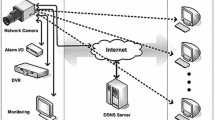Overview
- Authors:
-
-
B. I. Raj Pawate
-
Texas Intruments Incorporated, USA
Access this book
Other ways to access
About this book
This book discusses how to develop embedded products using DaVinci & OMAP Technology from Texas Instruments Incorporated. It presents a single software platform for diverse hardware platforms. DaVinci & OMAP Technology refers to the family of processors, development tools, software products, and support. While DaVinci Technology is driven by the needs of consumer video products such as IP network cameras, networked projectors, digital signage and portable media players, OMAP Technology is driven by the needs of wireless products such as smart phones. Texas Instruments offers a wide variety of processing devices to meet our users' price and performance needs. These vary from single digital signal processing devices to complex, system-on-chip (SoC) devices with multiple processors and peripherals. As a software developer you question: Do I need to become an expert in signal processing and learn the details of these complex devices before I can use them in my application? As a senior executive you wonder: How can I reduce my engineering development cost? How can I move from one processor to another from Texas Instruments without incurring a significant development cost? This book addresses these questions with sample code and gives an insight into the software architecture and associated component software products that make up this software platform. As an example, we show how we develop an IP network camera. Using this software platform, you can choose to focus on the application and quickly create a product without having to learn the details of the underlying hardware or signal processing algorithms. Alternatively, you can choose to differentiate at both the application as well as the signal processing layer by developing and adding your algorithms using the xDAIS for Digital Media, xDM, guidelines for component software. Finally, you may use one code base across different hardware platforms.
Table of Contents: Software Platform / More about xDM, VISA, & CE / Building a Product Based on DaVinci Technology / Reducing Development Cost / eXpressDSP Digital Media (xDM) / Sample Application Using xDM / Embedded Peripheral Software Interface (EPSI) / Sample Application Using EPSI / Sample Application Using EPSI and xDM / IP Network Camera on DM355 Using TI Software / Adding your secret sauce to the Signal Processing Layer (SPL) / Further Reading
Similar content being viewed by others
Table of contents (12 chapters)
-
Front Matter
Pages i-xxxv
-
-
-
-
-
-
-
-
-
-
-
-
-
Back Matter
Pages 123-123
Authors and Affiliations
-
Texas Intruments Incorporated, USA
B. I. Raj Pawate
About the author
Basavaraj I. Pawate (Raj), Distinguished Member Technical Staff, has held several leadership positions for TI worldwide in North America, Japan, and India. These cover a wide spectrum of responsibilities ranging from individual research to initiating R&D programs, from establishing product development groups to outsourcing and creating reference designs, from winning designs and helping customers ramp to production to being CTO of emerging markets. After completing his M.A.Sc. in signal processing at the University of Ottawa, Ottawa, Canada, Raj joined TI Corporate R&D in 1985 and worked on speech processing, in particular speech recognition for almost 10 years. He then moved to Japan where he established the Multimedia Signal Processing group from the ground up. When TI identified VoIP as an EEE, Raj went to Bangalore, India to establish a large effort in product R&D. Here he worked with Telogy, a company that Texas Instruments acquired, to deliver Janus, a multicore DSP device with VoIP software. Raj is credited with several early innovations: a few examples include the world’s first Internet Audio Player, a precursor to MP3 players, world wide standard for DSPs in standardized modules (Basava Technology), reuse methodologies for codecs and presilicon validation (CDR & Links & Chains), and one software platform for diverse hardware platforms. Raj has fifteen issued patents in DSP algorithms, memory, and systems. Several of these patents have been deployed in products. Raj has published more than thirty technical papers. Raj and his wife Parvathi have three daughters and live in Houston. Raj enjoys talking, walking, and, recently, reading philosophy




